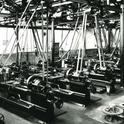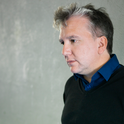Taming the beasts: The Bulls and Bears in the Market (1879) by William Holbrook Beard
Thinking Fast and Slow
by Daniel Kahneman (Allen Lane, £25)
For a long time, economists have tried to deal with the problem of decision-making. Daniel Kahneman, in his new book Thinking Fast and Slow, argues that, until he and his colleague Amos Tversky started behavioural economics in the 1970s, economists had been misguided. And for better or for worse, he is mostly right.
Think of a person offered the following gamble. Flip a coin; tails wins £50 and heads, just as likely as tails, wins nothing. The “expected value” of the gamble—a central concept in microeconomic theory—is one half of £50 plus one half of zero, or £25. Being willing to pay £1 to play this game strikes most of us as sensible, but paying £49 seems foolish. Deciding how much to pay, why and when illustrates many of the problems surrounding decision theory.
This is not a new problem. In his 1670 work, Les Pensées, Blaise Pascal came up with the original framework for computing expected value on the basis of probabilities. Economic theory was built on that premise. People with different attitudes to risk act differently, but they are rational and maximise their own “utility” or the satisfaction they expect to get. The simplicity and symmetry of this framework allowed economists to build many models to deal with policy issues ranging from economic growth to the optimal allocation of resources.
However, something was missing, as shown in one of Kahneman’s examples. Suppose one flips the coin, but the player will either lose £100, or win £150. There is the same 50-50 probability and the expected value remains £25. But when faced with threat of a loss, people in real life react very differently and will modify their calculation of the expected value of the gamble. This is called “loss aversion” and many studies show one needs at least a £200 win to balance the fear of losing £100.
In the 1970s, Kahneman and Tversky published a series of papers that changed what economists believed about decision theory. The most famous is “Judgment under Uncertainty: Heuristics and Biases,” published in Science in 1974, and now taught in most economics doctoral programs. For his work in this area, Kahneman received the Nobel Prize in economics in 2002.
Discussing bias, Kahneman uses the following example: some healthcare studies show that the lowest incidence of kidney cancer occurs in rural, sparsely populated, Republican, American states. Why is this? Our minds are already racing ahead, creating all sorts of biases, making all sorts of inferences about epidemiology in South Dakota. But let’s think about it for ten seconds. The explanation is simply in the numbers: sparsely populated states have a higher chance of exhibiting extreme outcomes, both good and bad. In this case, the extreme outcome is a low occurrence of cancer.
Our guesses are also “anchored.” Kahneman and Tversky ran an experiment in which estate agents were asked to sell a house. Half were shown a brochure from the seller with a very high price. The other half was shown the same document with a low price. Both sets of agents were asked to evaluate the price for which they could sell the house. The first group came back with a much higher figure due to the “anchoring effect” of the asking price, although both sets of brokers tried to justify their thought processes with objective data.
We owe Richard Thaler from the University of Chicago for some of the most interesting applications of Kahneman’s work in terms of understanding and influencing economic policy. In his excellent book Nudge (co-written with Cass Sunstein), Thaler explains that a framework in which consent is the default option for organ donation would save many lives. Other examples are programmes in US cities to pay $1 to teenage girls for every day they are not pregnant. These have shown a reduction in unwanted pregnancies with very favourable ratios of cost to benefit.
Thaler’s work is fascinating. One of his conclusions is that “a society can preserve freedom of choice while nudging people in various directions that will improve their lives.” But most of the recommendations stemming from the work of Kahneman and Thaler are small-scale improvements. They don’t necessarily tie up with other economic problems in a general framework, as the following example illustrates.
For centuries, the stock market has exhibited bubbles and crashes. We understand, sort of, how investors can get over-optimistic about new technologies and push stock prices to extreme levels, but remain quite puzzled as to why the stock market moves so much, or why it suddenly plunges. Perhaps we can find, in the works of Kahneman and the behavioural finance school, an explanation for why people suddenly panic. As Robert Shiller of Yale explains, “the recent worldwide stock market boom and then crash had its origins in human foibles and arbitrary feedback relations. The challenge for the economists is to make this reality a better part of their models.” One would want a behavioural finance model to tie up with macroeconomic variables such as growth, corporate earnings and price action.
Another interesting application of behavioural economics has been in the field of development economics by, among others, Esther Duflo from MIT. Her work has dealt with issues as broad as poverty, HIV and immunisation. For example, she looked at prevention of HIV/Aids in 19,000 adolescents in Kenya over seven years. The “Nudge” in her work is that coupling an education subsidy with an HIV curriculum leads broadly to young women deferring their first pregnancy and to lower levels of sexually transmitted diseases.
Kahneman’s underlying thesis is that decision-making has two systems: an automatic system (the autopilot one) and a second system, performing more complex analyses such as choice, concentration and computing. One would assume that in a stock market crash, most participants’ “System Two” goes into overdrive and many sub-optimal decisions are made at the same time. Panic selling also has to be a physiological phenomenon, wherein market participants exhibit surges of adrenalin and other measurable symptoms.
At some point, one hopes from an epistemological standpoint that Kahneman’s empirical observations are tied to current work in neurobiology on how people make decisions. Some researchers have looked at delayed gratification decisions through a brain scanner. People willing to delay gratification exhibit more activity in lateral areas of the cortex involved in higher cognitive operations. John Coates, an expert in neuroscience and finance at Cambridge, and others, are trying to tie physiological changes to investors’ behaviour and risk preferences. In one of his papers, Coates looks at levels of testosterone (reward) and cortisol (risk) in traders in the City. The data suggests that increasing hormone levels of traders during bull and bear phases of the market can shift risk preferences to such an extent that they destabilise the market. The study implies that the age and gender composition of traders and asset managers may impact market volatility and instability. It is hard not to be excited about what the future work of behavioural neuroscientists will show.
What will remain of behavioural economics in 20 or 50 years is not obvious. Our understanding of neuroscience and its impact on decision-making may make behavioural economics less relevant. As we start to understand better the memory that covers conscious activity and its links to vision and language, we may better understand some types of decisions. In the meantime, we can all make better decisions, and be better homo economicus.
Thinking Fast and Slow
by Daniel Kahneman (Allen Lane, £25)
For a long time, economists have tried to deal with the problem of decision-making. Daniel Kahneman, in his new book Thinking Fast and Slow, argues that, until he and his colleague Amos Tversky started behavioural economics in the 1970s, economists had been misguided. And for better or for worse, he is mostly right.
Think of a person offered the following gamble. Flip a coin; tails wins £50 and heads, just as likely as tails, wins nothing. The “expected value” of the gamble—a central concept in microeconomic theory—is one half of £50 plus one half of zero, or £25. Being willing to pay £1 to play this game strikes most of us as sensible, but paying £49 seems foolish. Deciding how much to pay, why and when illustrates many of the problems surrounding decision theory.
This is not a new problem. In his 1670 work, Les Pensées, Blaise Pascal came up with the original framework for computing expected value on the basis of probabilities. Economic theory was built on that premise. People with different attitudes to risk act differently, but they are rational and maximise their own “utility” or the satisfaction they expect to get. The simplicity and symmetry of this framework allowed economists to build many models to deal with policy issues ranging from economic growth to the optimal allocation of resources.
However, something was missing, as shown in one of Kahneman’s examples. Suppose one flips the coin, but the player will either lose £100, or win £150. There is the same 50-50 probability and the expected value remains £25. But when faced with threat of a loss, people in real life react very differently and will modify their calculation of the expected value of the gamble. This is called “loss aversion” and many studies show one needs at least a £200 win to balance the fear of losing £100.
In the 1970s, Kahneman and Tversky published a series of papers that changed what economists believed about decision theory. The most famous is “Judgment under Uncertainty: Heuristics and Biases,” published in Science in 1974, and now taught in most economics doctoral programs. For his work in this area, Kahneman received the Nobel Prize in economics in 2002.
Discussing bias, Kahneman uses the following example: some healthcare studies show that the lowest incidence of kidney cancer occurs in rural, sparsely populated, Republican, American states. Why is this? Our minds are already racing ahead, creating all sorts of biases, making all sorts of inferences about epidemiology in South Dakota. But let’s think about it for ten seconds. The explanation is simply in the numbers: sparsely populated states have a higher chance of exhibiting extreme outcomes, both good and bad. In this case, the extreme outcome is a low occurrence of cancer.
Our guesses are also “anchored.” Kahneman and Tversky ran an experiment in which estate agents were asked to sell a house. Half were shown a brochure from the seller with a very high price. The other half was shown the same document with a low price. Both sets of agents were asked to evaluate the price for which they could sell the house. The first group came back with a much higher figure due to the “anchoring effect” of the asking price, although both sets of brokers tried to justify their thought processes with objective data.
We owe Richard Thaler from the University of Chicago for some of the most interesting applications of Kahneman’s work in terms of understanding and influencing economic policy. In his excellent book Nudge (co-written with Cass Sunstein), Thaler explains that a framework in which consent is the default option for organ donation would save many lives. Other examples are programmes in US cities to pay $1 to teenage girls for every day they are not pregnant. These have shown a reduction in unwanted pregnancies with very favourable ratios of cost to benefit.
Thaler’s work is fascinating. One of his conclusions is that “a society can preserve freedom of choice while nudging people in various directions that will improve their lives.” But most of the recommendations stemming from the work of Kahneman and Thaler are small-scale improvements. They don’t necessarily tie up with other economic problems in a general framework, as the following example illustrates.
For centuries, the stock market has exhibited bubbles and crashes. We understand, sort of, how investors can get over-optimistic about new technologies and push stock prices to extreme levels, but remain quite puzzled as to why the stock market moves so much, or why it suddenly plunges. Perhaps we can find, in the works of Kahneman and the behavioural finance school, an explanation for why people suddenly panic. As Robert Shiller of Yale explains, “the recent worldwide stock market boom and then crash had its origins in human foibles and arbitrary feedback relations. The challenge for the economists is to make this reality a better part of their models.” One would want a behavioural finance model to tie up with macroeconomic variables such as growth, corporate earnings and price action.
Another interesting application of behavioural economics has been in the field of development economics by, among others, Esther Duflo from MIT. Her work has dealt with issues as broad as poverty, HIV and immunisation. For example, she looked at prevention of HIV/Aids in 19,000 adolescents in Kenya over seven years. The “Nudge” in her work is that coupling an education subsidy with an HIV curriculum leads broadly to young women deferring their first pregnancy and to lower levels of sexually transmitted diseases.
Kahneman’s underlying thesis is that decision-making has two systems: an automatic system (the autopilot one) and a second system, performing more complex analyses such as choice, concentration and computing. One would assume that in a stock market crash, most participants’ “System Two” goes into overdrive and many sub-optimal decisions are made at the same time. Panic selling also has to be a physiological phenomenon, wherein market participants exhibit surges of adrenalin and other measurable symptoms.
At some point, one hopes from an epistemological standpoint that Kahneman’s empirical observations are tied to current work in neurobiology on how people make decisions. Some researchers have looked at delayed gratification decisions through a brain scanner. People willing to delay gratification exhibit more activity in lateral areas of the cortex involved in higher cognitive operations. John Coates, an expert in neuroscience and finance at Cambridge, and others, are trying to tie physiological changes to investors’ behaviour and risk preferences. In one of his papers, Coates looks at levels of testosterone (reward) and cortisol (risk) in traders in the City. The data suggests that increasing hormone levels of traders during bull and bear phases of the market can shift risk preferences to such an extent that they destabilise the market. The study implies that the age and gender composition of traders and asset managers may impact market volatility and instability. It is hard not to be excited about what the future work of behavioural neuroscientists will show.
What will remain of behavioural economics in 20 or 50 years is not obvious. Our understanding of neuroscience and its impact on decision-making may make behavioural economics less relevant. As we start to understand better the memory that covers conscious activity and its links to vision and language, we may better understand some types of decisions. In the meantime, we can all make better decisions, and be better homo economicus.












